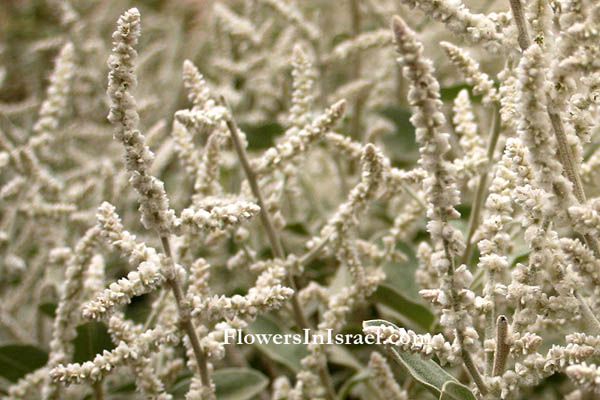Hebrew: לובד המדבר , Arabic: شجرة النعجة , شجرة الغزال , يرة
| Scientific name: | Aerva javanica (Burm. fil) Schultes | |
| Synonym name: | Aervan tomentosa, Aerva persica (Burm. fil) Merr. | |
| Common name: | Desert Cotton, Kapok bush | |
| Hebrew name: | לובד המדבר | |
| Arabic name: | شجرة النعجة , شجرة الغزال , يرة | |
| Family: | Amaranthaceae, ירבוזיים |

|
| Life form: | chamaephyte, semi-shrub | |
| Leaves: | Alternate, entire | |
| Flowers: | White | |
| Flowering Period: | January, February, March, April, May, June, December | |
| Habitat: | Desert, thermophilous (heat-loving) | |
| Distribution: | Semi-steppe shrublands, Shrub-steppes, Deserts and extreme deserts | |
| Chorotype: | Tropical | |
| Summer shedding: | Perennating |

Derivation of the botanical name: Aerva, from the Arabic name (Ra'a) of the plant. javanica, from Java. tomentosa,tomentum, "dense interwoven hair covering", osus (adjective suffix for nouns), plenitude or notable development; thickly and evenly covered short more or less apressed curled or curved matted hairs. persica, Persian. The Hebrew word: לובד, lobd, felt; the entire plant is covered with a flourish cover of unpleasant hairs, hence the Hebrew name lobd.
|